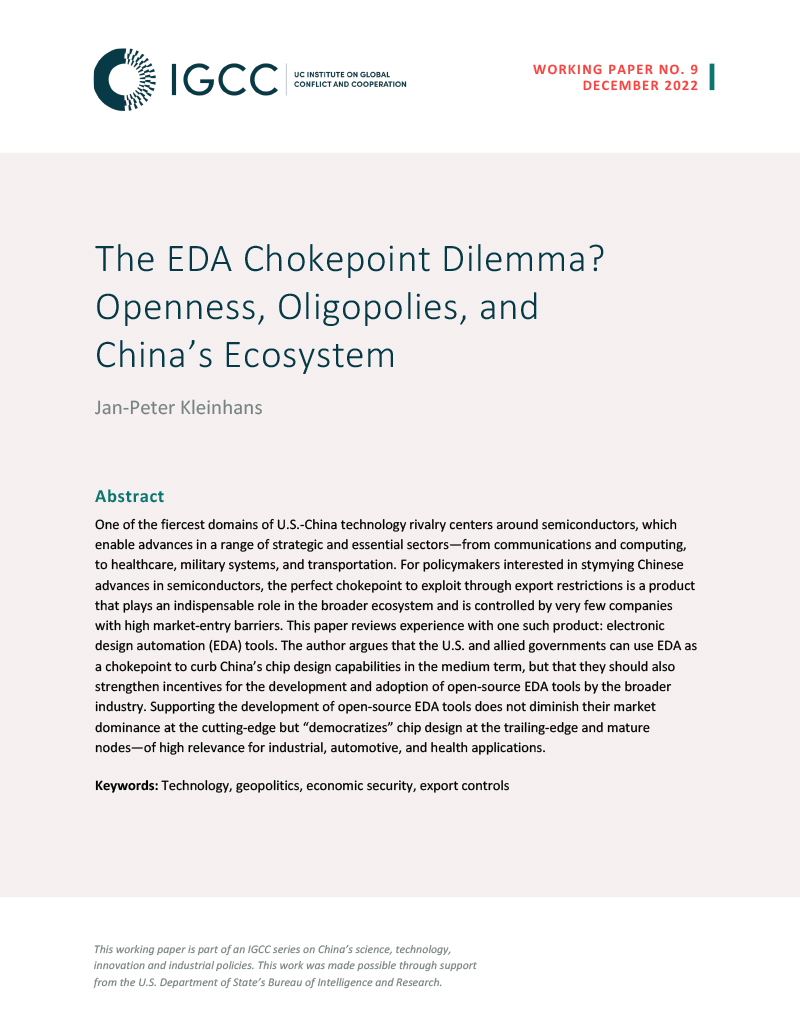The EDA Chokepoint Dilemma? Openness, Oligopolies, and China’s Ecosystem

In this working paper, Jan-Peter Kleinhans, the director of technology and geopolitics at Stiftung Neue Verantwortung (now known as Interface), argues that the U.S. and allied governments can use EDA as a chokepoint to curb China’s chip design capabilities in the medium term, but that they should also strengthen incentives for the development and adoption of open-source EDA tools by the broader industry.
DownloadOne of the fiercest domains of U.S.-China technology rivalry centers around semiconductors, which enable advances in a range of strategic and essential sectors—from communications and computing, to healthcare, military systems, and transportation. For policymakers interested in stymying Chinese advances in semiconductors, the perfect chokepoint to exploit through export restrictions is a product that plays an indispensable role in the broader ecosystem and is controlled by very few companies with high market-entry barriers. In this paper, author Jan-Peter Kleinhans reviews experience with one such product: electronic design automation (EDA) tools. Kleinhans argues that the U.S. and allied governments can use EDA as a chokepoint to curb China’s chip design capabilities in the medium term, but that they should also strengthen incentives for the development and adoption of open-source EDA tools by the broader industry. Supporting the development of open-source EDA tools does not diminish their market dominance at the cutting-edge but “democratizes” chip design at the trailing-edge and mature nodes—of high relevance for industrial, automotive, and health applications.
This working paper is part of an IGCC series on China’s science, technology, innovation, and industrial policies. This work was made possible through support from the U.S. Department of State’s Bureau of Intelligence and Research.